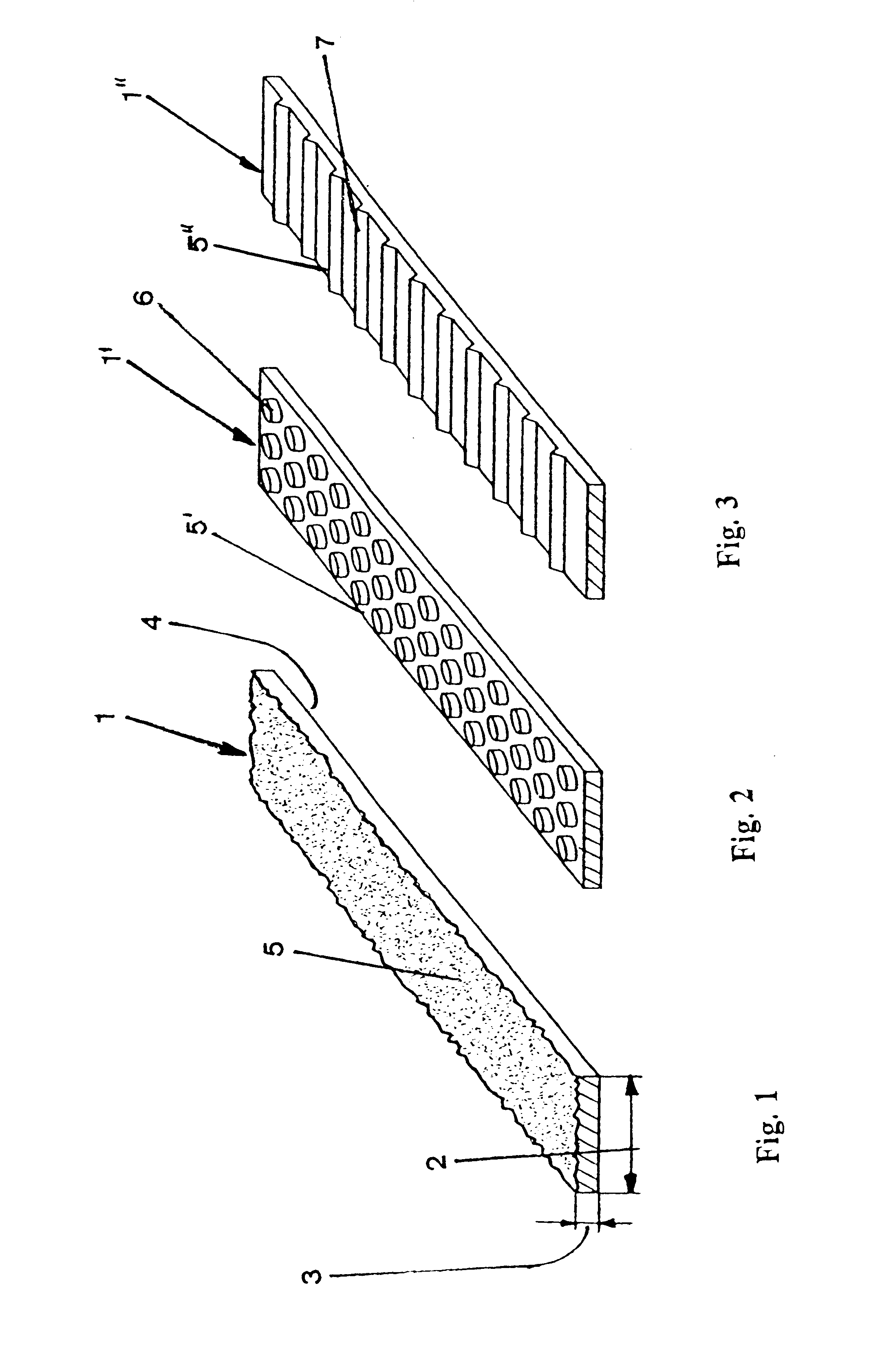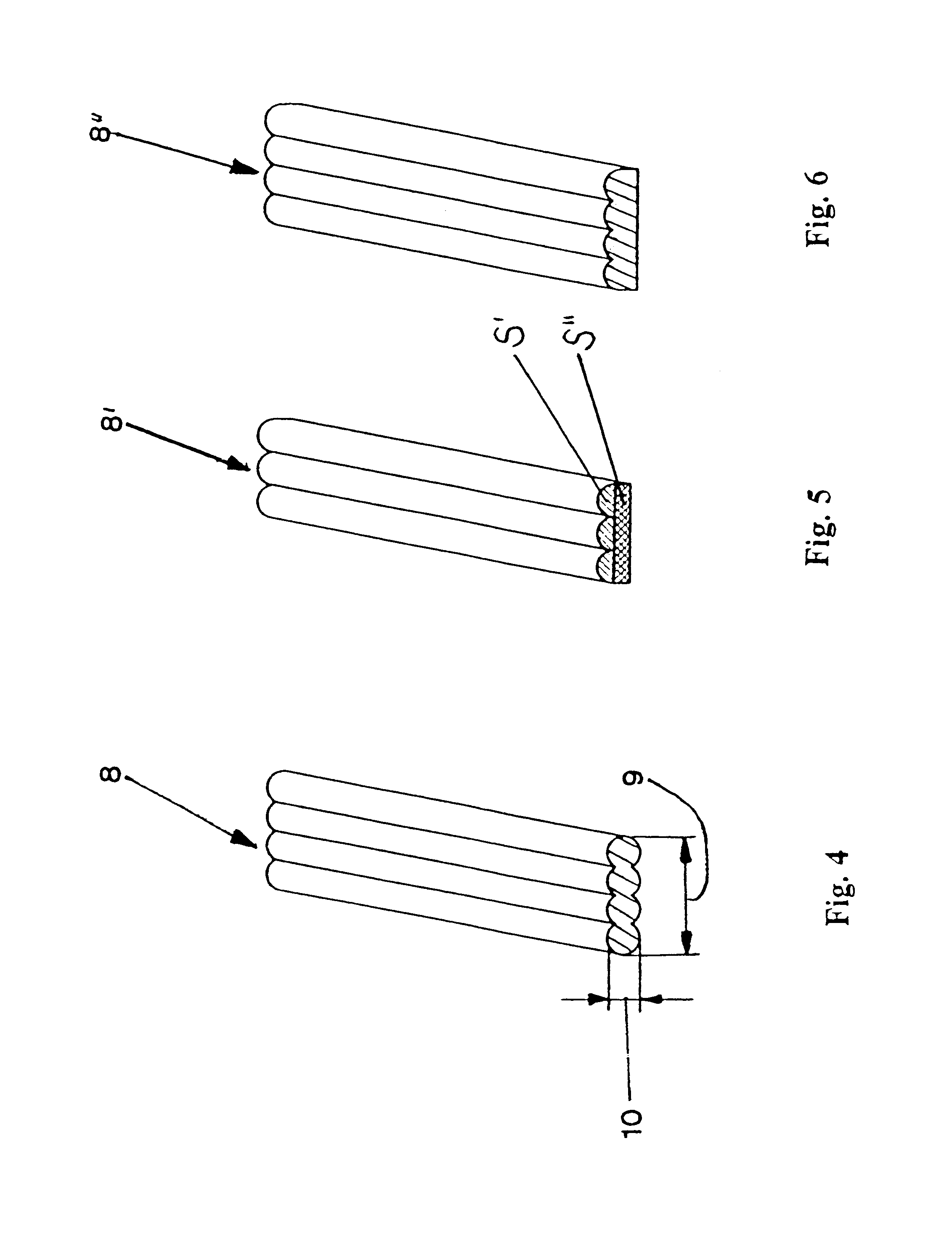Dryer fabric for paper making machine
a paper making machine and fabric technology, applied in the direction of weaving, washing apparatus, magnetic recording, etc., can solve the problems of soiling of the contact surface of the cloth facing the paper, obstructing the even drying and perfect transportation of the paper web, and soiling of the dryer cloth
- Summary
- Abstract
- Description
- Claims
- Application Information
AI Technical Summary
Benefits of technology
Problems solved by technology
Method used
Image
Examples
Embodiment Construction
A section of a flat strip 1 as shown in FIG. 1 in a perspective view is provided with a ratio of width 2 to thickness 3 which is disposed in the range of approximately 4:1. Whereas the surface of the flat strip 1 which is produced by way of extrusion is smooth on the one side (surface 4), the surface 5, which during the processing of the strip 1 into a weaved dryer cloth forms the contact surface to the paper web in sections, is structured irregularly. Said structured surface 5 is provided with an averaged surface roughness of between 5 .mu.m and 100 .mu.m. Such structurings can be produced by way of embossing the still incompletely cured plastic material.
The flat strip 1' as represented in FIG. 2 differs from the one shown in FIG. 1 by the regular structure of its surface 5' which comprises three parallel rows of cylindrical peaks 6 which extend in the longitudinal direction. The peaks 6 are disposed in each row at the same distance from one another and also form rows extending in ...
PUM
| Property | Measurement | Unit |
|---|---|---|
| Fraction | aaaaa | aaaaa |
| Length | aaaaa | aaaaa |
| Thickness | aaaaa | aaaaa |
Abstract
Description
Claims
Application Information
 Login to View More
Login to View More - R&D
- Intellectual Property
- Life Sciences
- Materials
- Tech Scout
- Unparalleled Data Quality
- Higher Quality Content
- 60% Fewer Hallucinations
Browse by: Latest US Patents, China's latest patents, Technical Efficacy Thesaurus, Application Domain, Technology Topic, Popular Technical Reports.
© 2025 PatSnap. All rights reserved.Legal|Privacy policy|Modern Slavery Act Transparency Statement|Sitemap|About US| Contact US: help@patsnap.com



